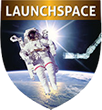Course Details
Course Summary
This course takes a detailed look at the propulsion requirements for launch vehicles, the trades necessary to establish propulsion system characteristics, and the current status of potential engines and motors. This is not an engine/propulsion design course, per se, but rather seeks to define the relationship between propulsion systems and both the vehicles into which they are integrated and the system requirements that determine their characteristics. Course emphasis is on those propulsion systems that are options for new or upgraded vehicles and includes liquids and solids. The current interest in new launch vehicles is largely driven by the perceived need to reduce the cost of putting payloads into orbits for a broad range of payload sizes and orbital parameters. This course will examine all aspects of the propulsion contribution to these costs, and will consider all aspects of operability as a key driving parameter in propulsion system selection and trade study outcomes. The larger reusable vehicles currently being studied require far tighter integration among the main engines, the vehicle propulsion systems, and auxiliary propulsion than previously needed. Hardware integration topics will be examined at length.
Course Materials
Each attendee receives a soft or hard copy of the presentation materials.
Who Should Attend
Managers, systems engineers, vehicle propulsion engineers and others who deal with propulsion system design and integration. Propulsion engineers who seek a better understanding of how their product integrates into the launch system. Aerospace industry and government consultants.
What You Will Learn
The relationships between system requirements and propulsion system characteristics. Vehicle level trade studies required and their typical results. Examples include propellant choices, mixture ratios, and expansion ratio trades. Operability and development costs and schedule inputs. Engine configuration trades and typical results. Examples include bell or external expansion nozzles, chamber pressure, engine thermodynamic cycles. LH2/LO2 versus tripropellants and a look at hydrocarbons and high density propellants. Current maturity of engines and motors either existing, under development or proposed. Critical system requirements and the appropriate design trades for auxiliary propulsion. Attitude control, on orbit and circularization requirements. The special case of landing engines. Vehicle side propulsion systems, pressurization, feed system, and purge system options. Technology readiness for operable, light weight systems. Ground system integration.
Course Outline
- Design Drivers and Fundamental Parameters of Performance.
Vehicle performance to specific impulse, density impulse, and thrust to weight. Measurements of merit: life cycle cost, reliability, responsiveness. Fundamental differences in propulsion requirements with vehicle size. - Propulsion Requirements and Functions for Launch Vehicles.
Main propulsion. Launch assist. Auxiliary propulsion and landing engines. - Characteristics of Propulsion Systems.
Comparison of liquids and solids. Definition of performance, operability, safety, and risk issues for various rocket propellant combinations. - Characteristics of Propellants.
Handling requirements. Biological and environmental hazards. Fundamentals of cryogenics. Densified propellants. - Engine Selection for Main Propulsion.
Vehicle level trades: thrust, engine number, mixture ratio, chamber pressure. Expansion mode choices, fixed and variable, internal or external. - Basic Liquid Engine Cycles for Main Propulsion.
Traditional LH2/LO2 expander, staged, and gas generator cycles. New options available and mixed cycles. Applicability of these cycles to other propellants. - Auxiliary Propulsion.
Orbital translation, attitude control, and landing functions. Value of integrated systems. Application to power and thermal control systems. - Survey of Existing and Proposed Engines.
Solids, cryogenics, hydrocarbons, and hypergolics. Applicability of Russian engines. Auxiliary propulsion options. - Vehicle Systems.
Weight estimation and comparison. Contribution to operability and reliability. Engine and ground interfaces. - Ground Systems.
Contribution to cost and operability. Connecting and fill operations. Safety issues. - Life Cycle Cost and Operability.
Overview of propulsion contribution to total vehicle. Specification of MTBO, failure rate and other parameters. Accessibility, removal and replacement parameters. Effect of design parameters on system cost. Health monitoring. - Case Study.
Selection of propulsion options for a cryogenic RLV. - Summary and Discussion of Current Status.
Reusable versus expendable. One or multiple stages. Fundamental differences between large and small vehicles. Need to reduce propulsion options.
Instructor
David Mohr has an international reputation as a rocket engine designer and propulsion systems lecturer. He designs and evaluates thermodynamic cycles for air-breathing, nuclear and rocket powerplant systems; and builds rocket engine components. Mr. Mohr has developed an innovative liquid rocket ignition device for reliable high-altitude-ignition. He provides rocket propulsion design, analysis, fabrication and test expertise to many aerospace companies such as Applied Astronautics, Hybridyne Aerospace, Lockheed-Martin and Aerojet. Early in his career, he assisted Rocketdyne in developing the Space Shuttle Main Engine (SSME). One current project is the development of a liquid oxygen turbopump for a new, high-pressure propulsion system. Mr. Mohr fabricates and tests rocket engines and fluid pumping machinery in his own facilities. He has lectured at numerous commercial and government facilities including NASA's Stennis Space Center and Italy's FiatAvio. Mr. Mohr has contributed sections to the Handbook of Turbomachinery and the Handbook of Machinery Dynamics.
